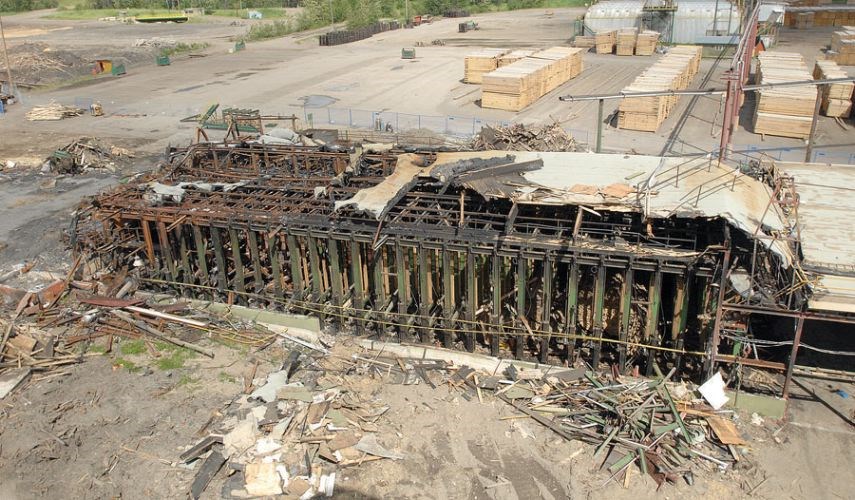BURNS LAKE — Conditions at Babine Forest Products "totally changed" after production shifts were extended, a longtime employee told a Friday coroner's inquest into the explosion that destroyed the sawmill and killed two workers.
In an effort to boost production, management had increased the weekday time devoted to processing lumber at the mill by 20 hours per week, with employees on the morning and afternoon shifts working 10 hours per day, up from the previous eight.
The change made a big difference in terms of dealing with debris and maintaining the machinery, Claude Briere told the inquest.
"As soon as they implemented the 10-hour shift, it totally changed," said Briere, who had been a millwright and machinist at the mill for 25 years when a Jan. 20, 2012 blast ripped through the facility.
Robert Luggi, 45, and Carl Charlie, 42, died in the explosion and 19 others were injured, many suffering serious burns.
Before the new shifts were introduced, Briere said there was no dust on the beams, the floors were clean and the debris disposed of when he walked into the mill in the morning.
"After the 10-hour shift, the piles were there from the day before, or the day before or the day before or the day before," Briere said.
He said the extended shifts meant less time for the graveyard cleanup crew to deal with things while those who were on during the day had fewer chances to do cleanup because they were also required to perform other duties.
"You can't take away 10 people working an eight-hour shift every single day on cleanup to five people doing one to two hours work on cleanup every day. It doesn't work and it didn't."
The change was introduced after Oregon-based Hampton Affiliates bought the then 30-year-old mill from West Fraser in 2006 and at about the time lumber prices took a severe downturn as a result of the downturn in the U.S. housing market.
Briere was also critical of the efforts to winterize the sawmill after new management took over, saying he was taken off that duty. He listed off a lengthy number of steps taken to get the facility ready for the season and maintained "nothing was done" by the time of the explosion.
Others had testified the mill was essentially frozen thanks to poor preparation and a cold snap that saw temperatures dip below -40 C with the windchill in the days before the disaster.
Shown a photo of a motor in the mill's east side below the operating floor that WorkSafeBC determined was the ignition source for a dust-fueled deflagration, or sub-sonic explosion, Briere said the sawdust had piled so high in that area that the motor could not be seen.
"It was a terrible dumping spot," Briere said in reference to the ineffectiveness of conveyors above the location in getting rid of debris and dust. He said one of the conveyors had been widened but still did not work properly.
"They had been working on that for two months," Briere said.
Briere, who continues to work as a millwright at Babine, recalled an incident 15 years before the blast when he saw what looked like a lightning bolt rip along an overhead beam. When he went up to get a closer look, he found a streak of burnt sawdust.
"So I know it ignites very fast, and it goes out very fast," Briere said.
The inquest is being held in the gymnasium at Island Gospel Fellowship and about 40 people were in the gallery on Friday. Since the inquest started on Monday, it has heard from 22 witnesses, about a dozen of them Babine employees.
Another half-dozen employees are scheduled to be heard on Monday before testimony turns to management on Tuesday and Wednesday. Testimony is expected to wrap up on July 28.
A seven-person jury will determine cause of death and make recommendations to prevent similar incidents in the future.



